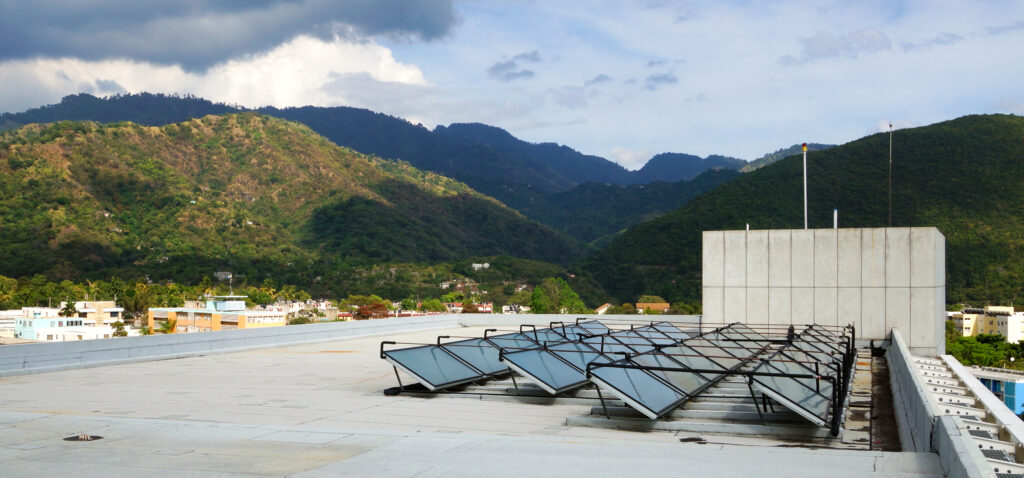
The cheapest and cleanest energy is the energy not used
The rising global population and continuous economic development and growth imply in an increasing demand for energy. The US Energy Information Administration (EIA) expects global energy consumption to nearly double by the year 2050 and renewable energy sources alone might not be able to supply this increasing demand.
For long, energy efficiency has been one of the most underrated opportunities to reduce our carbon emissions. Despite the little attention attributed to it, according to Amory B Lovins of the Rocky Mountain Institute, since 1975 energy efficiency measures have been responsible for reducing 30 times more carbon emissions than clean energy. A report from the International Energy Agency shows that end-use energy efficiency alone can deliver 35 per cent of the cumulative CO2 savings through 2050 required to meet the climate goals of the Paris Agreement.
Energy efficiency benefits go beyond reducing emissions and mitigating the impacts of climate change. Energy efficiency reduces operational cost, increasing competitiveness and productivity of enterprises. Energy efficiency has also a strong role to play in boosting economic activity and employment in the formal economy.
Although energy efficient technologies have always been available, there are still several barriers that prevent it from being deployed at its full potential. A lot of effort is being done in raising awareness of energy efficiency, including the creation of regulations, standards and labelling. Nevertheless, investment in energy efficiency is not a high priority in companies, who do not always have the access to financing that support those types of projects. Furthermore, energy efficiency is perceived as a high-risk investment, as there is lack of trust among the actors, including decision-makers in companies, efficient technology providers and financial institutions.
ESI as a solution for energy efficiency investment
For the past five years BASE has been working to mainstream the Energy Savings Insurance (ESI) model around the world. ESI is an innovative business model developed by BASE with the Inter-American Development Bank (IDB) to help mobilise investments towards energy efficiency.
Most of the energy efficient systems that are commercialised in the world use supply-installation contracts, where the provider sells the energy efficient system with the promise that the energy savings will be achieved in the future, and the customer has to bear the risks associated with this. The future savings promises by a provider are perceived as uncertain and associated as a very high-risk investment. Adding this to the usual high price-sensitivity, the customer tends to prioritise the low upfront costs of inefficient rather than new efficient equipment with higher upfront cost.
The ESI model comprises financial and non-financial elements designed to work together to build trust and credibility among key actors and to reduce the risk for enterprises to invest in energy efficiency. The model consists of four main elements: a standardised contract, an energy savings insurance, an independent technical validation process and a financing structure.
The ESI model has been successfully implemented in Colombia and Mexico (with support from the IDB) and is currently being developed or planned in ten other countries in Latin America, and Asia. In Europe, BASE was granted funding from the European Commission to roll out the model and it is being implemented in Italy, Portugal and Spain.
ESI has helped enterprises improve their productivity and competitiveness, reduce their energy consumption by up to 70 per cent, as well as the environmental impact generated as a result of their economic activities.
ESI to bring warm water in Colombian hospitals

In Bogota, Méderi clinic, the largest hospital network in Colombia used the support and elements of the ESI model to contract the provider to install thermal systems (in this case it was a renewable and efficient energy project). In this case, the project implementation had the technical validation of ICONTEC, the insurance coverage from SURA and the financing provided of BANCOLDEX.
The project consisted in the installation of 220 solar collectors on the roof of the Méderi hospital, which guaranteed hot water 24 hours a day for the rooms and patients at the hospital, satisfying the growing demand. With this project implemented with the ESI model, Méderi clinic was able to avoid emissions of wp-contentroximately 90 tons of CO2/year, with savings in energy costs of USD 23,000.
Until today, more than 30 projects have been developed in Colombia under the Energy Savings Insurance implementation programme. More than 15 energy efficiency providers have benefited from ESI model as a tool to build trust in energy efficiency and add value in their offers to the clients.